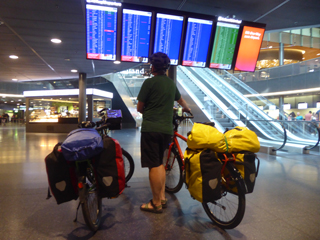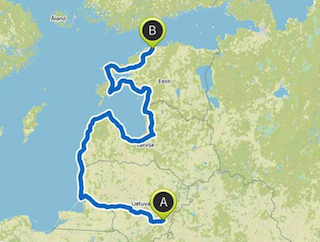
Vilnius – Kaunas – Curonian Spit – Klaipeda (Lithuania) – Liepaja – Cape Kolka – Jūrmala – Riga – Sigulda – Salacgriva (Latvia) – Pärnu – Kuressaare – Kärdla – Haapsalu – Tallinn (Estonia)
1703km cycled

Darina had a surprise plan. She was looking for a blank spot on our map within easy reach that would promise a reasonable amount of excitement without being too hot. With three capitals, a long coastline, a bunch of islands and centuries of sagas, the Baltic states qualified easily. As an added bonus for Kurt, these countries have a strong tradition of craft beers. Because of the prevailing south-westerly wind, we would start in the south and have tail wind for the greater part of our route to Tallinn!

Our starting point, Vilnius is a cute if somewhat provincial town playing city. Unassuming as it looks now, despite its population of 570,000, this was the center of Europe’s biggest country, stretching all the way to the Black Sea back in the 15th century. The Russians took over in the late 18th century; Lithuania had a short-lived independence from 1918 till 1939, and then it was under Russian – Nazi – Russian occupation until almost 30 years ago.
Referred to as Jerusalem of the North by Napoleon in the 19th century, Vilnius then had one of the highest Jewish populations in Europe. Holocaust statistics for Lithuania are horrific with 95% of Jews murdered during the Second World War, and numerous mass graves in the surrounding forests are marked with memorials. Stephan Collishaw’s historical novel “The Last Girl” is a moving depiction of the harrowing life of Jews in Vilnius under both Russian and Nazi occupation and how these chapters of history continue to haunt Lithuanians today.
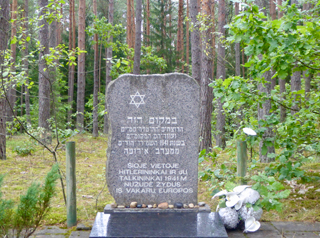
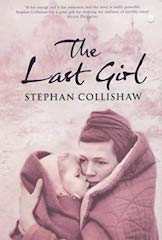
After the war, the Baltic states became part of the Soviet Union resulting in deportations, forced labour, killings, collective farming, food rations and poverty. Only under Gorbachev did things loosen up somewhat as the system failure became apparent, and the hope for independence was reborn. In 1989 about two million people formed a human chain from Vilnius via Riga to Tallinn, singing folk songs as a show of civilian protest. Two years later independence was proclaimed in all three states, and by 2004 the Russian troops had left.
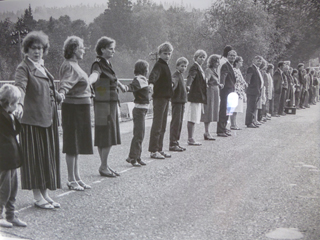
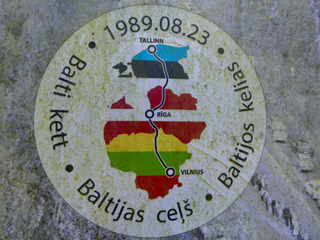
For the visitor today, Vilnius offers three Bs in the form of pleasant strolls through narrow lanes with baroque churches, endless restaurants and bars with home-made beer and a chance to rub shoulders with the world’s third best basketball team! And come to think of it, the place is full of balloons!

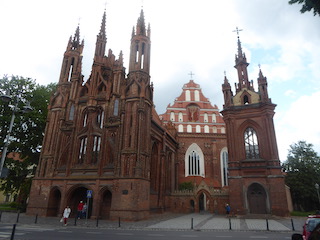
The (almost) independent artists’ republic of Ŭzupis functions as an open-air gallery; its constitution, with thirty-eight articles and three mottos translated into twenty-six different languages including Azeri and Gaelic, will certainly provoke a chuckle or two. The one that tickled our fancy was: A cat is not obliged to love its owner but must help him/her in time of need.
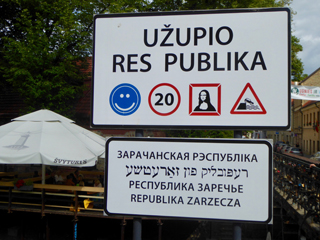
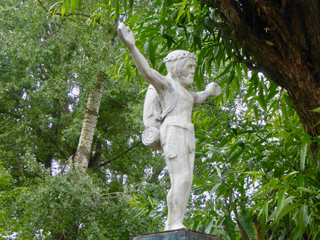
Another quirky discovery in the city was a mobile lane for smartphone junkies (like Kurt) who like to surf while walking through town. A free high-speed internet access is thrown in for good measure! Actually, the digital sector is the fastest growing industry in this young independent country.
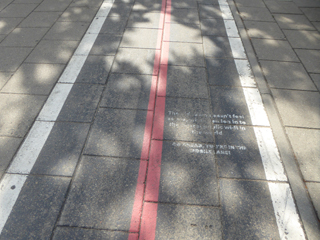
While on alternative themes, a previous Mayor of Vilnius, who happens to be a keen cyclist, made a name for himself in 2011 when he crushed a car parked illegally on a bicycle lane by driving over it with a military tank!
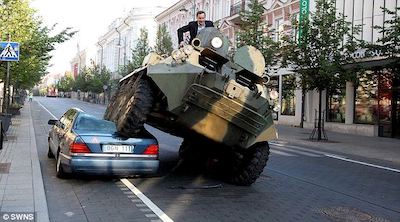
There is no shortage of medieval castles in Lithuania and the one in Trakai on an island in a lake is pretty impressive: like a bunch of big terracotta pots according to our friend Katie! The quaint village of wooden houses on the mainland includes some in the style of the Karaite’s (a Crimean people of Turkic origin and Mosaic faith that settled here during Lithuania’s heyday). We enjoyed a few Karaite specialties like Kybyn (meat pasties) and whole apples baked in pastry.


While the big Liberty Avenue in Kaunas was under reconstruction, street art and another bundle of big terracotta pots at the confluence of the Neris and Memel rivers were enough to keep us in good spirits. So did the bicycle lane along the river that brought us safely out of the city.
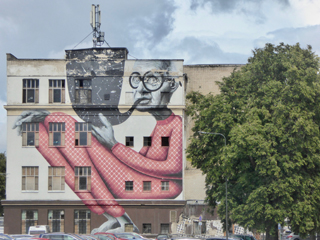
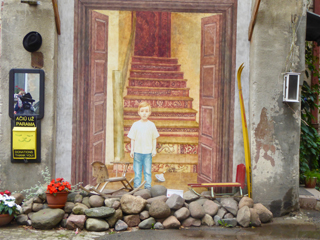
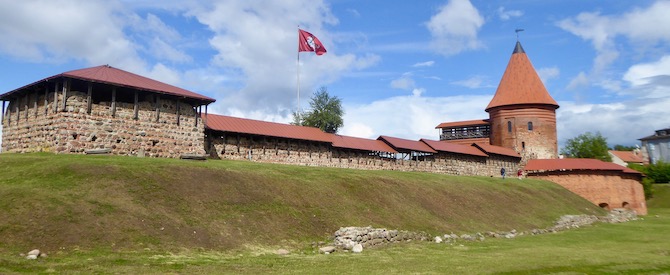
The river access to Kaunas was guarded over the centuries by a long series of defensive structures on natural or modified mounds/forts, which are great for a view of the valley in an otherwise very flat landscape.
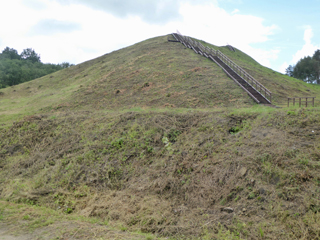
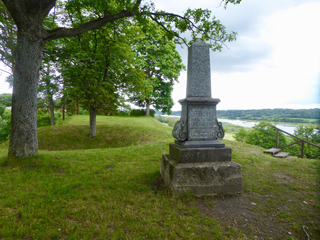
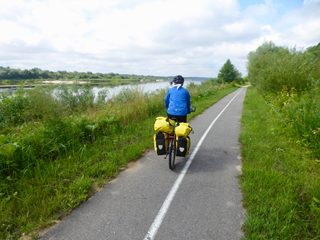
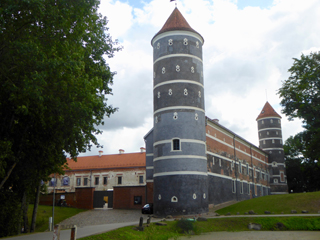
In addition to private campgrounds, there are numerous free camping spots dotted around the Baltic states. They do not have running water or electricity but are a very civilized version of wild camping, and Kurt likes to refer to them as halting sites! We found a wonderful one on the Memel River, where we enjoyed a beautiful sunset over the Russian exclave of Kaliningrad, a short swim away.
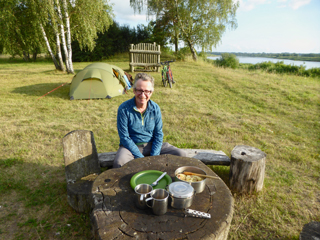
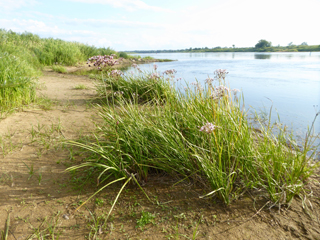


A small ferry took us from Vente to Nida on the Curonian Spit, a 98km long sand dune shared by Russia and Lithuania, where you can have a Sahara-by-the-sea feeling.

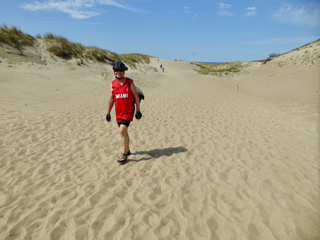
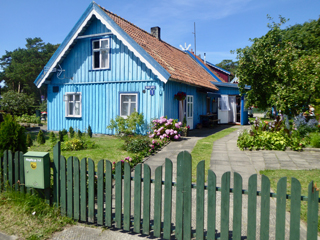
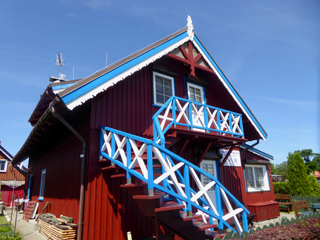
It is here that we started to encounter lots of touring cyclists following the Baltic Sea coastal route. Eurovelo routes 10 (Baltic Sea Route) and 13 (Iron Curtain Trail) overlap on this stretch.
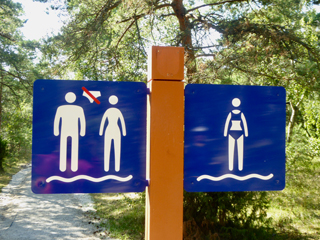
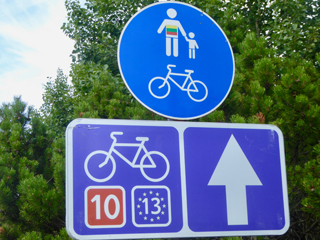
Now, if you hear coastal route, you’re excused for imagining views of a huge expanse of water on one side and some form of land on the other. Not here! Of course, it doesn’t make sense to build a road between the beach and the dune, so our band of tarmac was behind the dunes, affording us views of pines and birches, sometimes diluted with oak and beech trees. Such forested stretches are beautiful on day one, nice on day two, but on day three you start craving a field, a swamp or a freshly logged piece of forest just so the eye can roam a bit further. At least the traffic was mild since the roads seldom have an economic importance apart from the logging industry’s needs.
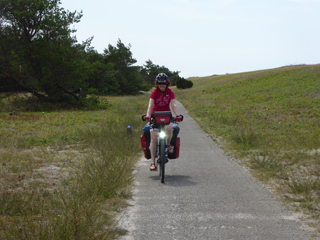
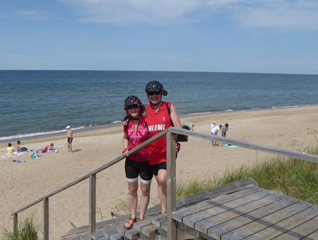
Towns were therefore very much appreciated. Klaipeda was founded by the German Teutonic Knights of the Sword in the 13th century. Its cobblestone streets were certainly not built with cyclists in mind, but the big harbour gave a real sense of being somewhere. The balcony of the Drama Theater is where Hitler announced the annexation of the town to Germany during the Second World War, when it served as a Nazi submarine base. Subsequently, the town was pretty much flattened by air raids, but what remains of the old town has quite a German style.

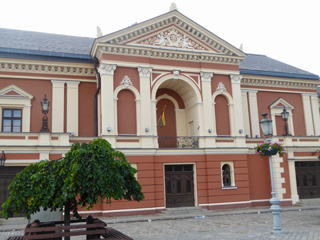

Just across the border we enjoyed the city of Liepaja with its big wooden houses, craft centre (no, not beer… amber!) and huge Orthodox church in the northern, Russian part of town, which was a former Soviet marine stronghold.


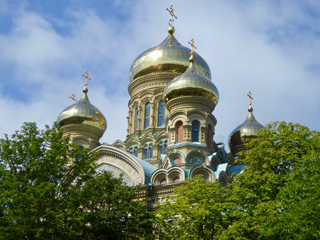
A typical souvenir from Latvia/Lithuania is amber, a fossilized pine-tree resin dating back 40,000 years and collected in the Baltic Sea. It was considered as valuable as gold by the Romans and was therefore of great trading importance in the past. Besides its attractive yellow/orange colour and light weight making it perfect for jewellery, amber has many medicinal properties including pain relief, stress reduction and fatigue elimination. Darina invested in a pair of amber earrings just in case the 50s should pose some health challenges!
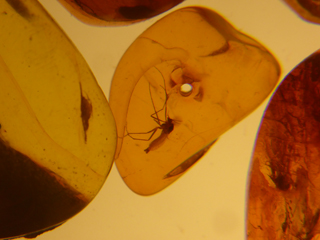

Now northbound on the coast, we were to reap the benefits of Darina’s plan. The south-westerly wind was to blow us the whole way up to Cape Kolka, where the Baltic Sea meets the Gulf of Riga! Not! We had headwind the whole way through a quiet sealed forest road, in a former military area that was closed to civilians during Soviet times. Cape Kolka’s apocalyptic scene of uprooted trees strewn along a beautiful white-sand beach was reward enough before we returned to forest and south-easterly headwind all the way to Jūrmala!
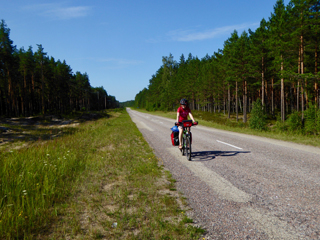
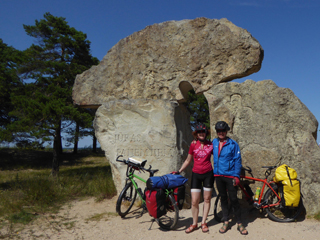
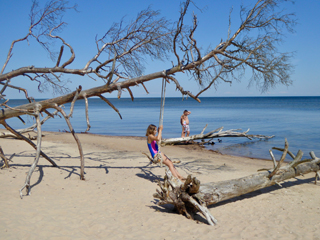
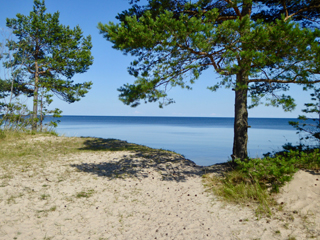
Now Jūrmala is quite a special town. A holiday magnet for over 100 years, its beautifully old carved wooden palaces and modern architecture equivalents, all send out the message of “mine is bigger than yours”. Still, we enjoyed the unhurried atmosphere between the pedestrianized streets, parks and beach.
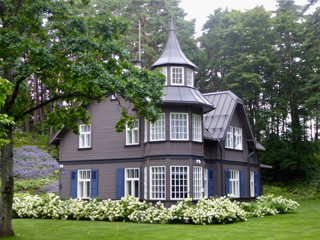
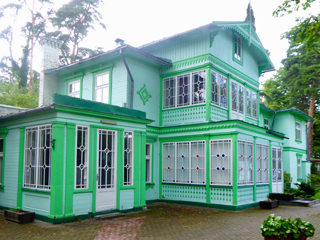
From here we followed a dedicated cycle route into Riga, leading not only through forest, but also along railway lines.
Riga, the biggest of the three capitals, was Kurt’s favourite on this trip. This city of 740,000 teems with gothic spires, art nouveau, spacious parks and a big market with local produce ranging from smoked fish to pickled cabbage and everything in between.
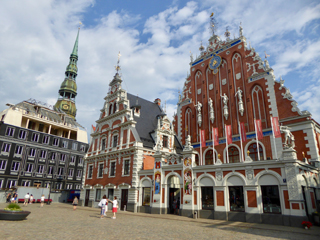
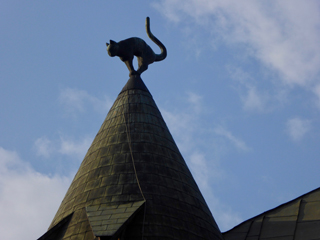
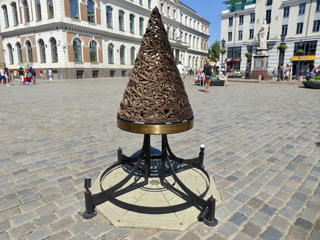
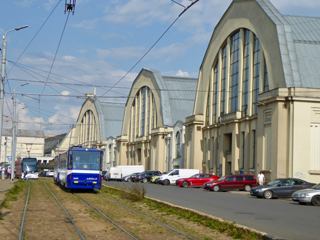
Darina found a luxurious apartment right in the centre of the old town, where we retreated like royalty between walking tours and museum visits. The numerous museums in Riga echoed the dark Soviet and German occupation chapters, and both the occupation museum and the Holocaust museum were grim reminders of the horrific past endured by Latvians.

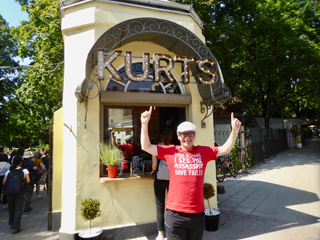
Thanks to the myriad of cyclists we encountered, we knew that the A1 highway north was as busy as unpleasant. So, we took the cycling path to the turnoff for the A2 and cycled on that one to Sigulda, the outdoor capital of Latvia.
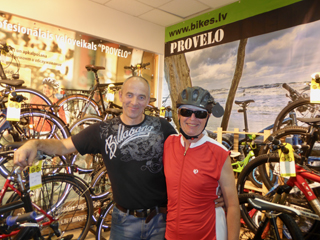
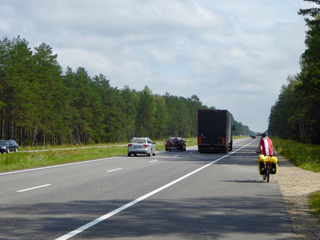
Every outdoor exploit you can imagine is offered here including flying in an aerodium! A what? Well, an aerodium is an open-air vertical wind tunnel. Clad with flight suit, helmet, goggles and ear plugs, you jump into the tunnel and are suspended in the air as if in flight by the wind blowing from below. The selling point is that it’s a similar sensation to skydiving, without having to organize helicopters or parachutes. That’s mad, Ted!

Situated at the lower end of the Gauja National Park, Sigulda is also studded with castles and a winding river carving out a valley giving Kurt a little topography, albeit just 200masl.

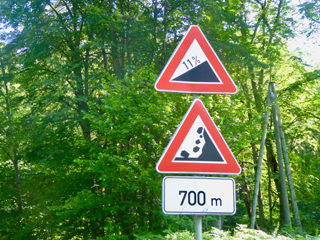
The small Gūtmana cave is a magnet for lovers because of the heartbreaking Romeo and Juliet type story connected with it. A little wounded girl that had survived a local battle was given refuge in the nearby terracotta-pot Turaida castle. She grew up to be a total stunner, and although she received offers from all sorts of nobility, she fell for the castle gardener. They met regularly in secret in this cave before she was killed tragically by one of her many suitors, as he tried to kidnap her. She became known as the Rose of Turaida and judging by the graffiti, lovers have been flocking here since the 16th century!
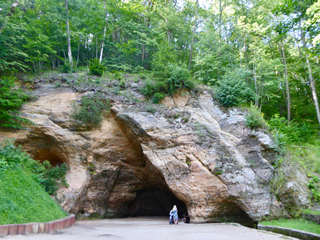
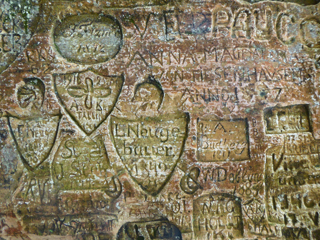
From there it was quiet country roads past corn, barley, oat and buckwheat fields, … and did we mention forests? The many lakes in this area were perfect for refreshing swims as temperatures topped 30°C. It certainly was a pleasant alternative to the A1, which we joined in Salacgrīva, near the Estonian border.

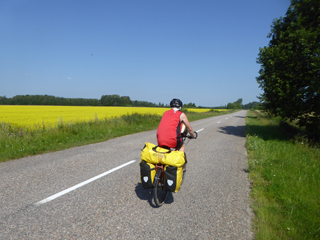
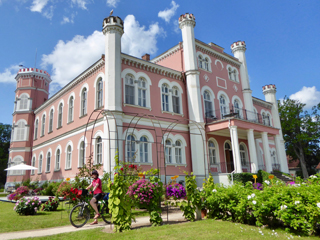
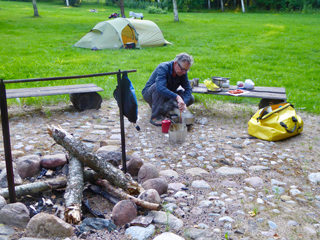

Leaving the busy A1, Estonia was a bit of a shock to the system. This stretch of coast was complete with a dedicated cycle lane, and because of the weather and the weekend, it was crowded with holiday makers. If you have a choice to make holidays by the sea in southern Estonia or northern Latvia, it seems that the former sounds a whole lot more exotic!
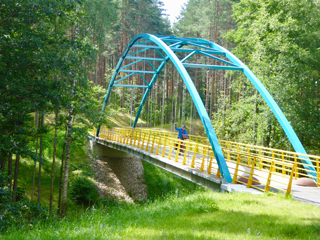
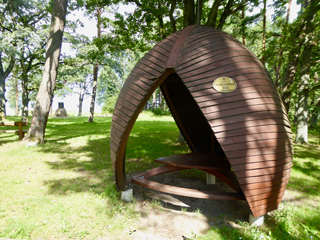
Pärnu, in addition to the beach and colourful wooden houses, offers loads of spas with saunas and mud therapy. The full sauna experience includes flagellating yourself with dried birch branches as you sweat it out at over 60°C. A great cure for a hangover, they claim. The mud baths have all sorts of therapeutic properties for the nervous and cardiovascular systems, the skin, blood and metabolic processes. Kurt got off scot-free, as the saunas we visited were free of birch branches and the therapists were last seen trotting off to the beach with their buckets to collect this miraculous mud!
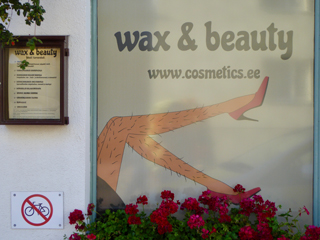
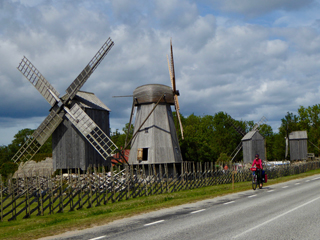
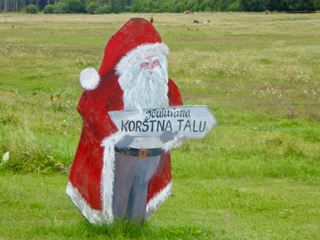
On the islands of Saaremaa and Hiiumaa we enjoyed … you got it … more forests! In all fairness though, Saaremaa had a lot of juniper trees for added variety.
There were a few sites commemorating brutal events from the German northern crusade. Authorized by the pope in the 12th Century, the German Teutonic Knights of the Sword headed up to the pagan Baltic states to convert, rampage and conquer. The Muhu stronghold is where the 2,500 local pagans made a last stand for six days against 20,000 crusaders before surrendering and being massacred in the name of God.
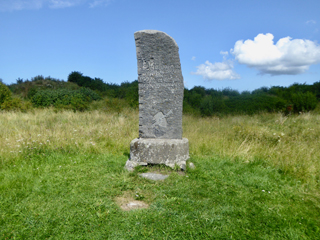
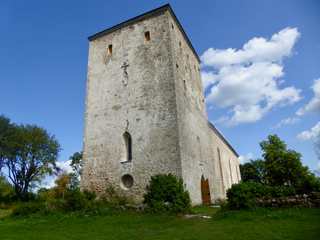
Some hundred years later, in the neighbouring island of Saaremaa, the headquarters/church of said Brotherhood of the Sword in Pöide was the scene of another horrific event. This time it was the locals who had the upper hand, besieging the knights in the church and promising not to raise a sword if they surrendered. After eight days, the Germans gave in, only to be stoned to death as they emerged from the fortress.
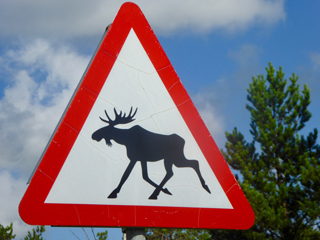
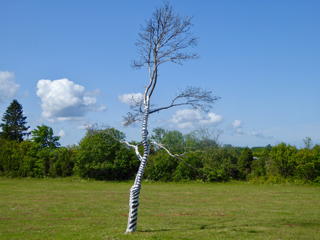
On a lighter note, Orissare boasts a soccer field with the European tree of the year 2015 plonked right in the middle. It seems like these are the instructions for building a soccer pitch Estonian style:
- Find a field
- Define four corners
Erect the goals
Try to get rid of any obstacles, e.g. a 100-year-old oak tree right in the middle
If you fail at 4, just play around them, bending it like Beckham!
With this training, the Estonians could well be a force to be reckoned with in the UEFA Euro 2020 qualifiers!
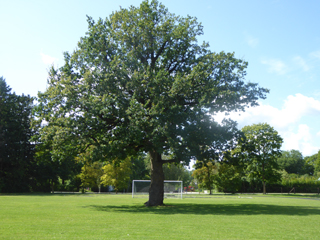
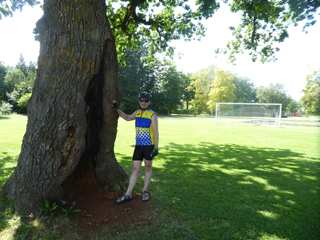
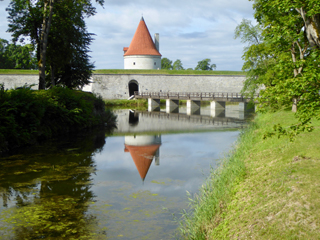
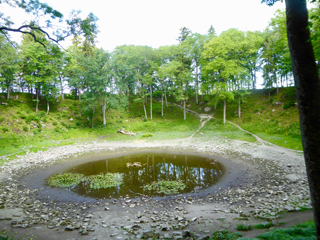
Needless to say, there were castles and manor houses dotted around, including one that belonged to the Ungern-Sternbergs, an old Baltic German family with a famous warlord responsible for ridding Mongolia of Chinese troops in 1921!
Back on the continent outside Haapsalu we came across a ruined castle with a sad love story from the same family. Having fallen in love with the princess in Merseburg Castle, Germany, one of the Ungern-Sternbergs proposed to her. She refused saying that she loved her father’s castle so much, she could never leave. Not taking no for an answer, he returned to Estonia to build an exact replica of the castle, convinced that it would win her over. It was alas not to be, as both the princess and suitor had both died before the castle was completed.
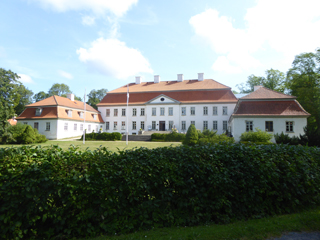
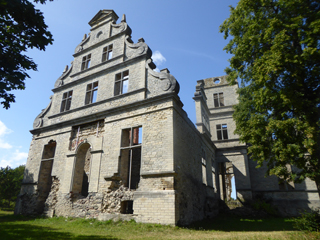
Haapsalu, like Pärnu, was another favourite spa/mud resort for the Soviet elite, and many streets are named after well-known visitors such as Tchaikovsky. Closed to foreigners during Soviet times, today it’s a lovely pleasant town with castle ruins, ornamented wooden houses, and one of the best restaurants we frequented on this trip (Wiigi Kohvik).
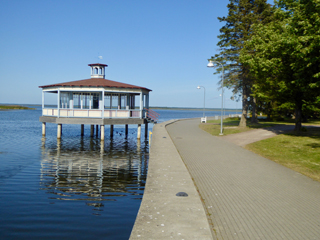
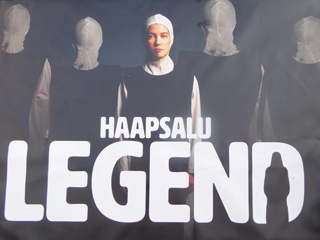
Estonia is really full of stories, and Haapsalu is no exception. Way back in the 14th century a young girl dressed up as a choir boy to be closer to her lover inside the castle compound. The problem was that her sweetheart was a canon and had taken a vow of chastity. When the bishop got wind of their antics, he sent the canon to the cellar to starve to death and immured the girl alive into the chapel wall. Supposedly, her screams were heard for weeks and even today when the full moon in August shines on the baptistery, she can be seen in the window. The White Lady music festival is held at this time each year to commemorate her dreadful death.

Haapsalu train station was built with the hob nobs from St Petersburg in mind. The 216m covered platform ensured that they wouldn’t have to brave the elements en route to their spa treatments. The old railway line has since been converted into a 64km health trail for walkers, joggers, cyclists and skiers. We followed it towards Tallin and then the rest was mostly on dedicated cycle lanes and quiet roads.

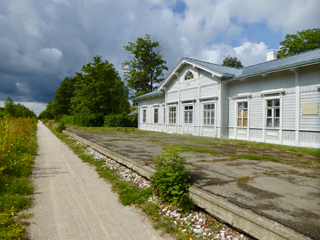
Tallinn was Darina’s favourite capital of the trip. This fairytale walled city, complete with turrets and a castle hill overlooking the harbour and new town, oozes with the best of restaurants, street art and avant-garde architecture. With a population of 430,000, it’s a manageable size and definitely somewhere to visit before you die!
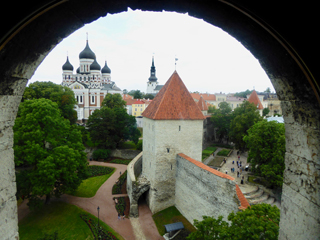
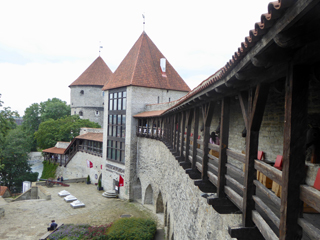
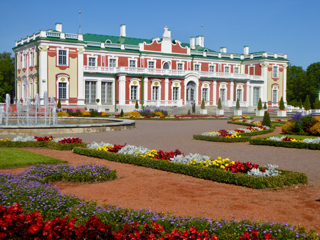
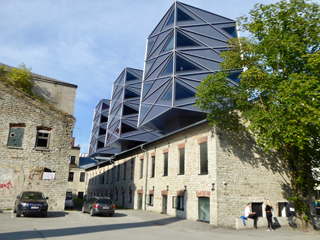
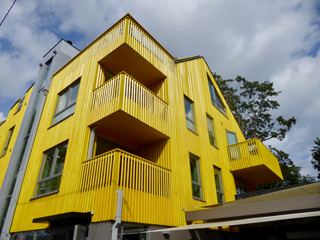
In all three capitals, we joined a walking tour of the city and had very engaged, knowledgeable and enthusiastic guides that taught us a lot about their homeland and history. In Tallinn, the tour had a communist focus, and we extended the theme by visiting the former KGB centre on top of the Viru hotel. During the Soviet era, it was the tallest building in the city and the only hotel available for foreign guests. Every second room was reserved for spies, who eavesdropped via microphones hidden in saucers and ashtrays, took pictures through holes in the walls and, of course, tuned into every telephone conversation. Long after the KGB’s departure, a renovation of the hotel brought all this espionage equipment to light. Fascinating!
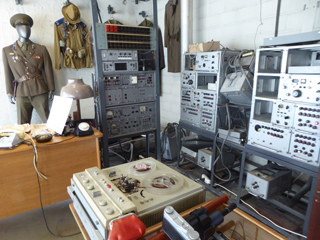
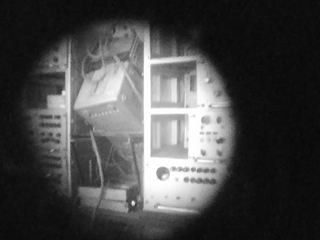

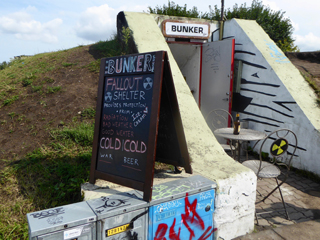
After so much joint history/suffering, you would expect these countries to be identical. But there are differences; language being an obvious divider. While the Lithuanian and Latvian languages are closely related, Estonian is related to Finnish and Hungarian. This tie with the Finnish language makes it easier for Estonians to work in Finland, where they can earn a higher salary. Lithuanians and Latvians tend to emigrate to English/German-speaking countries where, depending on their language skills, they might have to make-do with lesser paid jobs.
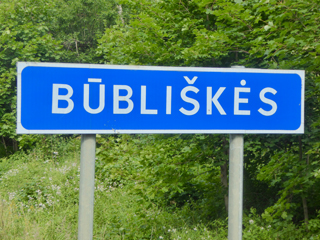
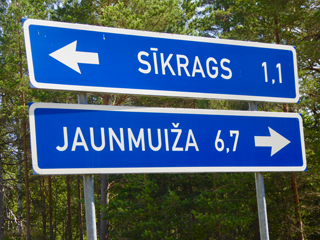

Estonia is streets ahead when it comes to IT. When they apply for their ID card, every Estonian citizen receives an official email address that they can use to vote, pay taxes and replace their driver’s license. They consider it everyone’s right to have internet access, and often in the middle of nowhere we saw signs directing us to internet hot spots! And it was actually an Estonian who invented Skype! Considering it is not even 30 years since Estonia was closed off to the outside world, they have made phenomenal progress. Just makes you wonder why Ireland is still struggling to roll out broadband across the country.
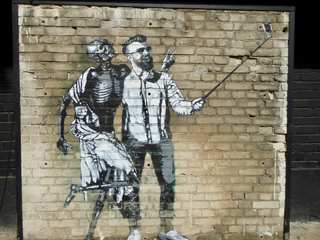
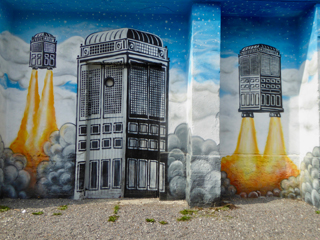
Meagre as the wages are in all three countries, we hardly ever saw beggars on the streets. Gardens provide a high degree of self-sufficiency, and most people seem to have one. Forests (yeah, those things left and right of the road) are full of berries and mushrooms, and if you know how to shoot a deer you get the meat too. Fishing is another pastime that adds variety to the plates.
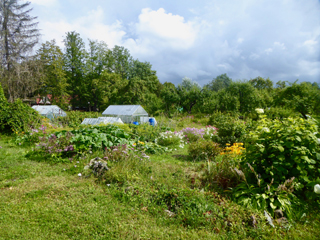
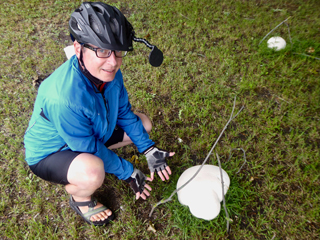
Food certainly didn’t disappoint. Darina fell for the chilled beetroot soup, not least because of its magnificent colour! Other specialities included Zeppelin dumplings (potato dough, filled with minced meat and served with a sour cream and bacon sauce), cheese balls, fried bread with a cheese sauce, potato pancakes and fish that could be washed down with a craft beer or their local answer to Coca-Cola: kvas, made from fermented rye bread. And something new for Darina was tea with jam! Yes, you heard it: Black tea with enough strawberry jam to give it an orange/pink colour. For dessert, a typical favourite is rye-bread soup, and cheese cake was widely available.


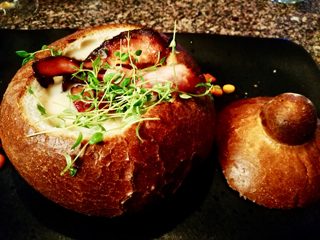
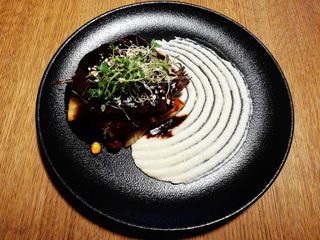
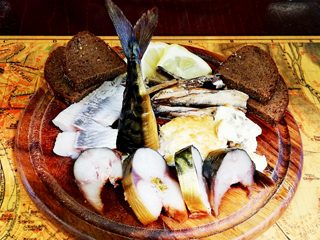
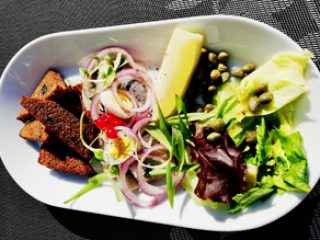
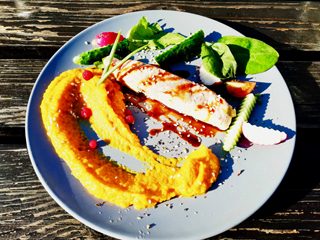
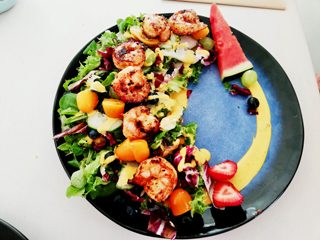
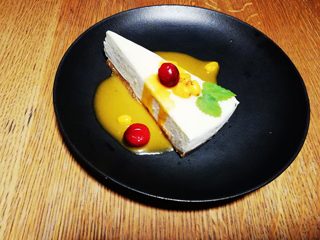


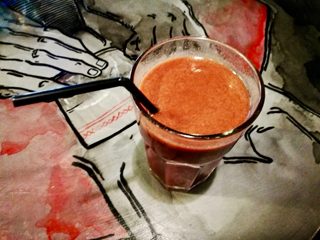
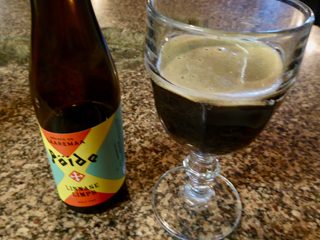
Village shops were never far away and generally had the makings of a sandwich with a variety of dark breads, cheeses, and cold cuts/sausages. Because most Lithuanians are self-sufficient as far as fruit and veg goes, most of what we could find in the shops was what didn’t grow locally. There were no apples or pears, but bananas, oranges and peaches; no carrots or potatoes, but aubergines and peppers! The selection was at times limited, but we jazzed the lot up with cumin and coriander 😉
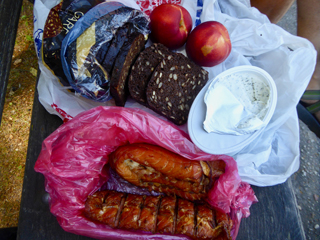
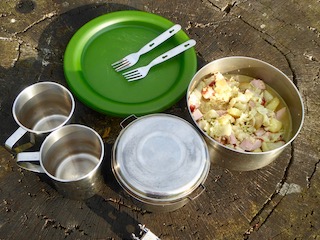
There was no shortage of accommodation. Apart from the free camping spots mentioned above, private campgrounds cost 10-20€ for two adults with a tent. It was often possible to camp behind a hotel or even in the garden or orchard of a private house! Forests abound for wild camping, but there was a warning in all three states about tick-borne encephalitis, so we played it safe. For rainy days, it’s possible to rent a cabin (even a two-storey chalet) for about 15 €/person, and we paid 30-70€ for a double room/apartment in town.
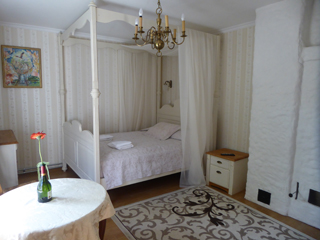
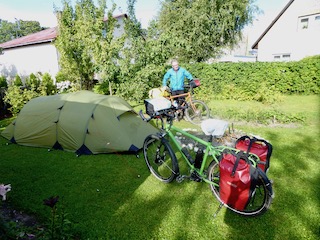
Most cities had a network of cycle lanes and a map showing recommended cycling routes in the area. It is worth exploring beyond the Baltic Sea coast, as the inland roads and bike routes can offer a tad more variety.
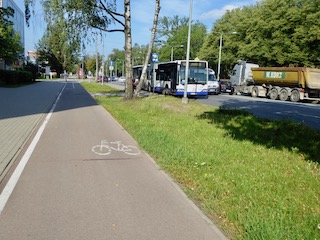

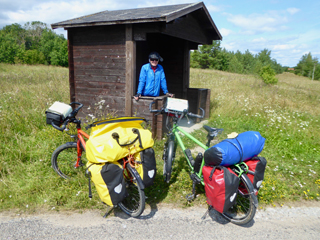
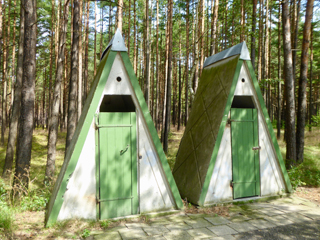
All three Baltic State flags are quite thought provoking, but the Estonian combination seems to capture the past, present and future of all three nations:
Blue: Bright future and Nordic sky
Black: Dark past of the nation and soil
White: Striving towards enlightenment

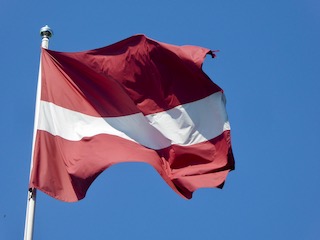

To sum up, Kurt has an analogy. In Riga we enjoyed starters, main courses and dessert in the Garlic Pub, ending a wonderful meal with garlic ice-cream. Well, we can say that it was interesting, gave us a story to tell and even some bragging rights, but that doesn’t mean that we will be ordering it again in the near future!
Just wondered… did we mention that we visually overdosed on trees?!
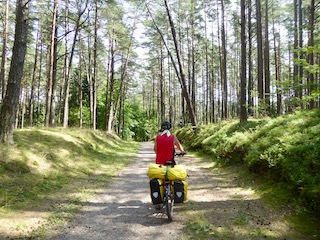
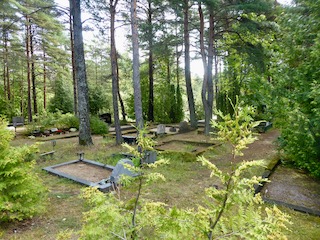
P.S. You might remember Jackline from the Via Rhona update? Well, her contribution to this trip was a super clean tent thanks to immigration regulations in NZ, where she camped recently with our well-travelled tent. We could give her an additional acknowledgement here, but since she doesn’t read our updates…

